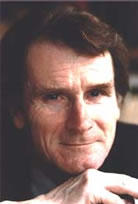Jolyon Howorth: Europe in Search of Strategic Autonomy
Jun 15, 2017
When the EU’s Common Foreign and Security Policy (CSDP) was first launched at Saint Malo in December 1998, the key concept was “autonomous action”. The EU, it was asserted, would develop its own strategic vision. The European framework would allow the member states to generate serious military capacity, whereas in NATO they would simply free-ride. And CSDP would allow European forces to tackle regional security challenges the US did not wish to engage with. Alas, CSDP did none of those things.
Almost two decades later, the June 2016 European Global Strategy asserted that the EU’s foreign and security policy goal remains “strategic autonomy”. The reality, as we have seen in Libya and Ukraine, and as it is lived by member states with a Russian border, is that Europe appears to be more dependent on NATO and the US than at any point since the mid-1980s.
Yet Donald Trump has called NATO obsolete. And his view is by no means marginal in the US. Major International Relations scholars such as Barry Posen[1], Andrew Bacevich[2], Stephen Walt and John Mearsheimer[3] have recently called for the US progressively to withdraw from NATO and to hand it over, lock stock and barrel, to the Europeans. How likely is such a scenario and what are the alternatives?
The quest for a robust – ostensibly autonomous – CSDP has been revitalized following the European Global Strategy report, Brexit and the election of Donald Trump. In May 2017, Angela Merkel, deploring Trump’s berating of the European allies at the previous week’s NATO summit, famously declared that “the era in which we could fully rely on others is over to some extent”. There have been innumerable new calls for the Union to develop a credible and robust capacity to handle regional crises. The European Parliament, the European Council and the European Commission have all weighed in. Some even suggest that European integration itself could be re-kick-started via the drive for defense integration. At the same time, all these voices insist that cooperation between the EU and NATO is vital to this process. How can the aspiration for autonomy coexist with intensified cooperation?
In December 2016, the EU and NATO, following up on the Joint Declaration issued at the NATO summit in Warsaw (June 2016), released a laundry list of areas in which the two entities are actively cooperating. These include hybrid threats, cyber warfare, maritime security, military capabilities, R & T and others. One might be forgiven for believing that this is simply common sense – hardly the stuff of grandiloquent declarations. So the real question is: what is to be the relationship between these two entities over the coming decades? If the EU actually achieves strategic autonomy, what is NATO for? Conversely, if the EU does not achieve strategic autonomy, what is CSDP for?
We need to be totally realistic. There are huge obstacles standing in the way of “strategic autonomy”: persistent nationalist reflexes from member states; significant divergences in European strategic cultures; lack of consensus about the level of ambition in this policy area; challenges to defense budgets in a time of austerity; the sheer scale of the challenges facing Europe in its Eastern and Southern neighborhoods; the absence of public awareness of and/or support for a more muscular or assertive Europe; and, perhaps above all, the parallel existence of NATO.
I see three scenarios for the future of EU-NATO relations.
The first scenario, improbable but not unthinkable, would be one associated with the gradual unravelling of European integration. The EU member states would return to the 1950s and become totally dependent on NATO. Such a prospect would be the worst of all possible worlds for both Europeans and Americans.
A second scenario would be one in which significant progress were made in implementing the many proposals highlighted during the past year. This could produce a far more effective CSDP, capable of making a difference particularly in the Southern neighborhood. But it would not really amount to “strategic autonomy” in that it would still leave the EU existentially dependent on NATO and the US, while at the same time expending a great deal of money duplicating capabilities largely provided to NATO by the US. It might satisfy those who believe the EU should do more, but who are unconvinced that it should do much more.
The final scenario assumes that the EU is serious about becoming a “strategically autonomous” actor. If it wishes genuinely to stabilize its neighborhood, it has no alternative but to develop its capacity to the very fullest extent. This means ending its dependency on the US. EU-NATO cooperation, should lead, over the next ten to fifteen years, to the Europeanization of NATO. Under this schema, Europe will achieve strategic autonomy through its progressive apprenticeship-in-leadership via NATO, and the US will be able to reduce its footprint in the alliance and concentrate on its strategic challenges elsewhere.
Dwight D. Eisenhower said at the time of NATO’s creation in 1949: “If NATO is still needed in ten years, it will have failed in its mission”. Perhaps in 2029, for its 80th anniversary, NATO can finally declare “mission accomplished” when Europeans become entirely self-reliant in security terms. That, after all, was the initial intention of the founding fathers.
[1] Barry R. Posen, Restraint. A New Foundation for US Grand Strategy, Ithaca, Cornell University Press, 2014
[2] Andrew Bacevich, “Ending Endless War: A Pragmatic Military Strategy”, Foreign Affairs, September/October 2016
[3] John Mearsheimer & Stephen Walt, “The Case for Offshore Balancing: A Superior US Grand Strategy, Foreign Affairs, July-August 2016
_____________________________________________________________________________
Jolyon Howorth is Visiting Fellow at the KFG from January to June 2017. Please click here to visit his personal profile at the Department of Political Science of Yale University.
